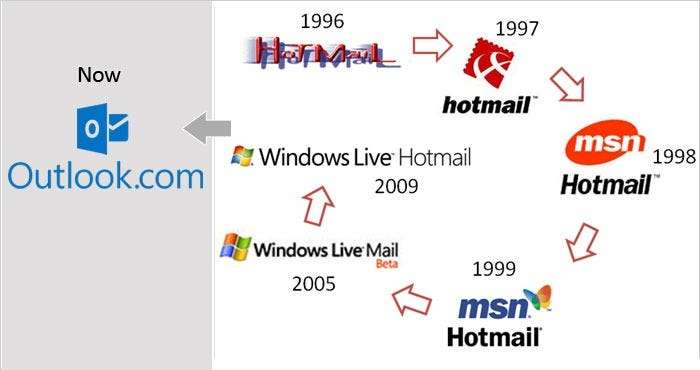In the ever-evolving landscape of digital communication, email stands as a foundational pillar. Hotmail, launched a quarter of a century ago, played a pivotal role in shaping how we connect and communicate online. This article delves into the history of email, highlighting Hotmail’s significant contribution and exploring the evolution of this indispensable tool in the 21st century. Join us as we journey through time and revisit the milestones that have brought us to where we are today in the world of email.
The Dawn of Email: A Brief History
Before Hotmail revolutionized personal email, the groundwork had already been laid. Let’s take a quick trip back to the beginning.
- 1971: Ray Tomlinson sends the first email across a network using the @ symbol to denote the user and their machine.
- 1970s: Email becomes more widely used within academic and government circles.
- Late 1980s: Commercial email services begin to emerge, paving the way for widespread adoption.
The Pre-Hotmail Era: Key Challenges
Early email systems weren’t without their limitations. Understanding these challenges helps appreciate Hotmail’s impact;
Before Hotmail, accessing email often required being tied to a specific computer or network. This limited accessibility and portability.
Hotmail’s Revolutionary Arrival
Hotmail’s launch marked a turning point in email history. Let’s explore what made it so groundbreaking.
Hotmail, launched in 1996, was one of the first webmail services. This meant users could access their email from any computer with an internet connection, a revolutionary concept at the time.
Key Features of Hotmail
Several features contributed to Hotmail’s initial success and widespread adoption.
| Feature | Description |
|---|---|
| Web-Based Access | Access email from any computer with an internet connection. |
| Free Accounts | Offered free email accounts, a major draw for users. |
| Ease of Use | Simple and intuitive interface made it accessible to a broad audience. |
The Evolution of Email After Hotmail
Hotmail’s success paved the way for other webmail providers and innovations in email technology. Now, let’s look at its lasting legacy.
Following Hotmail’s success, numerous other webmail providers emerged, including Yahoo! Mail and Gmail, leading to a competitive and innovative market.
Key Innovations and Trends
Email has continued to evolve, incorporating new features and adapting to changing user needs.
- Spam Filtering: Improved algorithms to combat unsolicited emails.
- Mobile Access: Optimized for smartphones and tablets.
- Integration: Seamless integration with other applications and services.
FAQ: Frequently Asked Questions About Email History
Here are some common questions about the history of email and Hotmail’s role.
Q: Who invented email?
A: Ray Tomlinson is credited with sending the first email across a network in 1971.
Q: What was Hotmail’s biggest innovation?
A: Its web-based access, allowing users to access their email from anywhere.
Q: Is Hotmail still around?
A: No, Hotmail was rebranded as Outlook.com by Microsoft.
Q: How has email changed since Hotmail?
A: Email has become more sophisticated with improved spam filtering, mobile access, and integration with other services.
The impact of Hotmail on the digital landscape is undeniable. Its introduction of free, web-based email revolutionized communication and paved the way for the email systems we rely on today. While Hotmail itself has evolved into Outlook.com, its legacy continues to shape how we connect and share information online. As we celebrate 25 years since its launch, we recognize Hotmail’s pivotal role in transforming email from a niche tool into a ubiquitous form of communication. The future of email will likely bring even more advancements, building upon the foundation laid by pioneers like Hotmail. The journey of email is far from over, and it promises to be an exciting one as technology continues to evolve.

